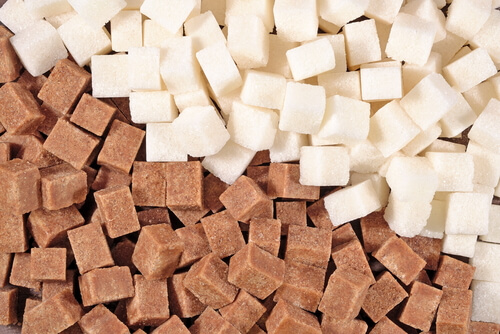The refining process of beet sugar vs cane sugar varies, affecting the final product’s appearance.
Discovering the Distinctions being used and Benefits In Between Beet Sugar Vs Cane Sugar
In the culinary globe, the option between beet sugar and cane sugar is not merely concerning sweet taste however includes a nuanced consideration of taste, application, and effect. While both sugars come from different plants, each undertakes distinct manufacturing processes that discreetly influence their characteristics and viability for numerous dishes. As cooks and consumers significantly prioritize both the ecological and flavor profiles of their ingredients, comprehending these distinctions ends up being crucial. This expedition offers insight right into how each sugar kind can best boost culinary developments.
Beginnings and Manufacturing Processes of Beet and Cane Sugar

Walking stick sugar, on the various other hand, comes from the sugarcane plant, an exotic grass belonging to Southeast Asia and now grown in tropical areas worldwide. The production of cane sugar begins with the harvesting of cane stalks, which are crushed to launch the juice. This juice is after that boiled to focus it, after which it is spun in centrifuges to produce raw sugar crystals. These crystals are further refined to produce the white sugar frequently available in shops.

Nutritional Material and Health And Wellness Considerations

When contrasting the dietary content of beet sugar and cane sugar, it comes to be obvious that both types essentially provide the same caloric values, with around 16 calories per teaspoon and no significant nutrient variety. Both sugars, when eaten in excess, can add to elevated blood glucose degrees, a threat variable for diabetic issues and various other metabolic disorders. From a wellness perspective, moderating intake of any kind of type of sugar, whether from beet or cane, is advisable to stay clear of these potential negative impacts find out here on health.
Taste Accounts and Culinary Applications
Regardless of their similar chemical structures, beet sugar and cane sugar vary discreetly in taste, which can affect their usage in different culinary contexts. Walking cane sugar frequently brings a hint of molasses, also in its refined kind, lending a cozy, caramel-like touch that boosts baked goods, coffee, and chocolate-based dishes. On the other hand, beet sugar is defined by its extremely improved, neutral taste, making it a versatile sugar that does go to this web-site not modify the flavor accounts of recipes.
Environmental Effect and Sustainability
While both beet and cane sugars are originated from plants, their environmental impacts vary considerably as a result of the distinctive approaches of farming and processing needed for each. Sugar beet cultivation frequently entails extensive mechanization, which can enhance fossil fuel intake and carbon exhausts. However, beets can be expanded in cooler climates and call for less irrigation, potentially lowering water use compared to sugarcane. Sugarcane, on the various other hand, is commonly expanded in exotic areas where it depends greatly on watering and a much longer growing period, increasing its water impact.
Moreover, the processing of sugarcane commonly produces a substantial quantity of waste, consisting of bagasse, which, although usable as biofuel, regularly adds to air contamination if shed inefficiently. Sugar beet handling uses even more of the raw products, leading to much less waste. Both industries deal with difficulties in decreasing their ecological impacts, however ongoing advancements in agricultural techniques and waste management are intending to enhance sustainability.
Economic Elements Influencing the Sugar Sector
The financial characteristics of the sugar market are dramatically influenced by international market demands and trade policies. In regions where sugarcane or sugar beet manufacturing is subsidized, producers may have an economic benefit that allows them to use lower rates on the international market.
Furthermore, fluctuations in international need for sugar, affected by dietary patterns and industrial use in food, straight influence costs and production degrees. beet sugar vs cane sugar. Weather problems also play a crucial role, as they can substantially influence plant returns and, consequently, the supply chain. This variability introduces a level of financial unpredictability that can lead to financial investment volatility in sugar production industries, influencing choices from planting to market method
Verdict
Finally, both beet and cane sugar have special high qualities that fit various culinary needs. While cane sugar conveys a rich taste ideal for enhancing baked items, beet sugar's nonpartisanship is best for lighter dishes. Nutritional similarities notwithstanding, their unique manufacturing processes and ecological influences add complexity to click for source the choice in between them. Hence, comprehending these distinctions helps cooks and consumers make notified decisions that line up with their health, cooking, and moral preferences.